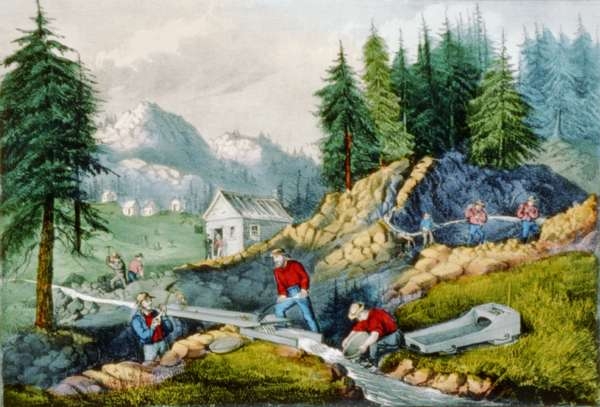About Publications Library Archives
heritagepost.org

Preserving Revolutionary & Civil War History

Preserving Revolutionary & Civil War History

Credit: Library of Congress
Media type: engraving
Museum Number: LC-USZC2-1755
Annotation: This lithograph shows miners shoveling sand from stream into sluice while one miner pans for gold in the same stream, small building and mountains in the background. The gold rush was over when this lithograp was published in 1871. On January 24, 1848, less than 10 days before the signing of the peace treaty ending the Mexican War, James W. Marshall, a 36-year old carpenter and handyman, noticed several bright bits of yellow mineral near a sawmill that he was building for John A. Sutter, a Swiss-born immigrant who owned one of the great ranches that dotted California’s Sacramento Valley. To test if the bits were “fool’s gold,” which shatters when struck by a hammer, or gold, which is malleable, Marshall “tried it between two rocks, and found that it could be beaten into a different shape but not broken.” He told the men working with him: “Boys, by God, I believe I have found a gold mine.”
Year: 1871